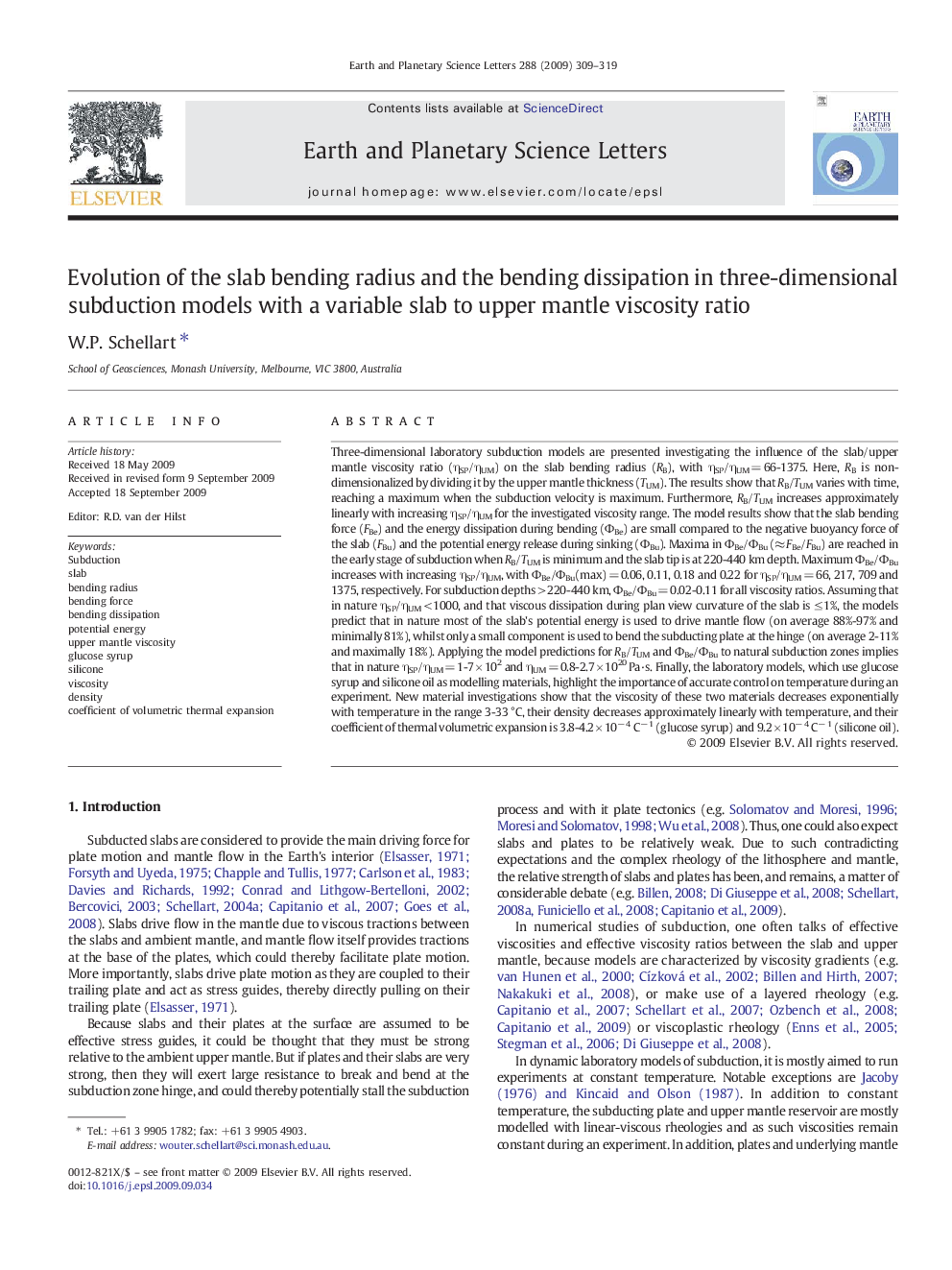| کد مقاله | کد نشریه | سال انتشار | مقاله انگلیسی | نسخه تمام متن |
|---|---|---|---|---|
| 4678973 | 1634863 | 2009 | 11 صفحه PDF | دانلود رایگان |

Three-dimensional laboratory subduction models are presented investigating the influence of the slab/upper mantle viscosity ratio (ηSP/ηUM) on the slab bending radius (RB), with ηSP/ηUM = 66-1375. Here, RB is non-dimensionalized by dividing it by the upper mantle thickness (TUM). The results show that RB/TUM varies with time, reaching a maximum when the subduction velocity is maximum. Furthermore, RB/TUM increases approximately linearly with increasing ηSP/ηUM for the investigated viscosity range. The model results show that the slab bending force (FBe) and the energy dissipation during bending (ФBe) are small compared to the negative buoyancy force of the slab (FBu) and the potential energy release during sinking (ФBu). Maxima in ФBe/ФBu (≈ FBe/FBu) are reached in the early stage of subduction when RB/TUM is minimum and the slab tip is at 220-440 km depth. Maximum ФBe/ФBu increases with increasing ηSP/ηUM, with ФBe/ФBu(max) = 0.06, 0.11, 0.18 and 0.22 for ηSP/ηUM = 66, 217, 709 and 1375, respectively. For subduction depths > 220-440 km, ФBe/ФBu = 0.02-0.11 for all viscosity ratios. Assuming that in nature ηSP/ηUM < 1000, and that viscous dissipation during plan view curvature of the slab is ≤ 1%, the models predict that in nature most of the slab's potential energy is used to drive mantle flow (on average 88%-97% and minimally 81%), whilst only a small component is used to bend the subducting plate at the hinge (on average 2-11% and maximally 18%). Applying the model predictions for RB/TUM and ФBe/ФBu to natural subduction zones implies that in nature ηSP/ηUM = 1-7 × 102 and ηUM = 0.8-2.7 × 1020 Pa·s. Finally, the laboratory models, which use glucose syrup and silicone oil as modelling materials, highlight the importance of accurate control on temperature during an experiment. New material investigations show that the viscosity of these two materials decreases exponentially with temperature in the range 3-33 °C, their density decreases approximately linearly with temperature, and their coefficient of thermal volumetric expansion is 3.8-4.2 × 10− 4 C− 1 (glucose syrup) and 9.2 × 10− 4 C− 1 (silicone oil).
Journal: Earth and Planetary Science Letters - Volume 288, Issues 1–2, 30 October 2009, Pages 309–319